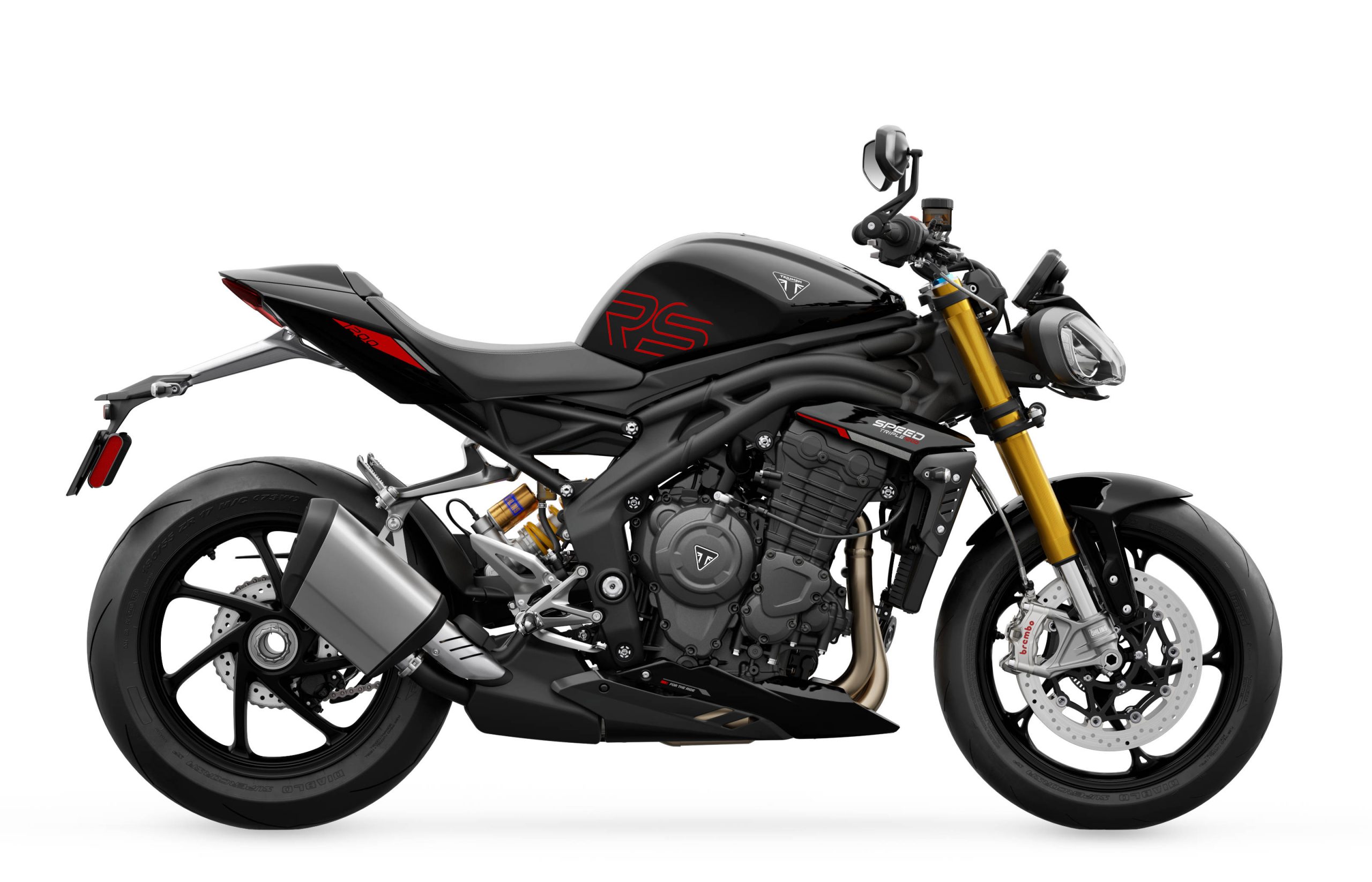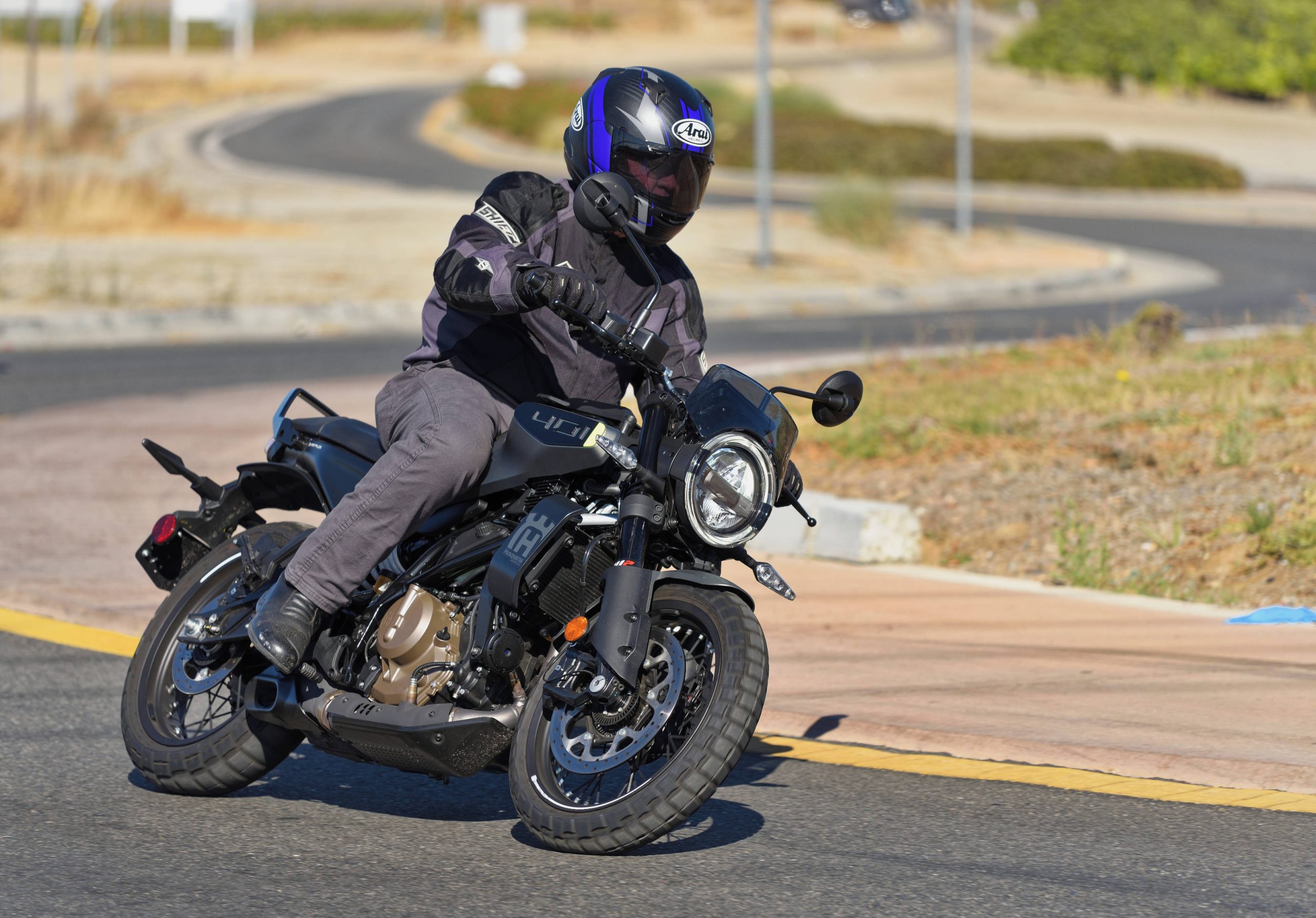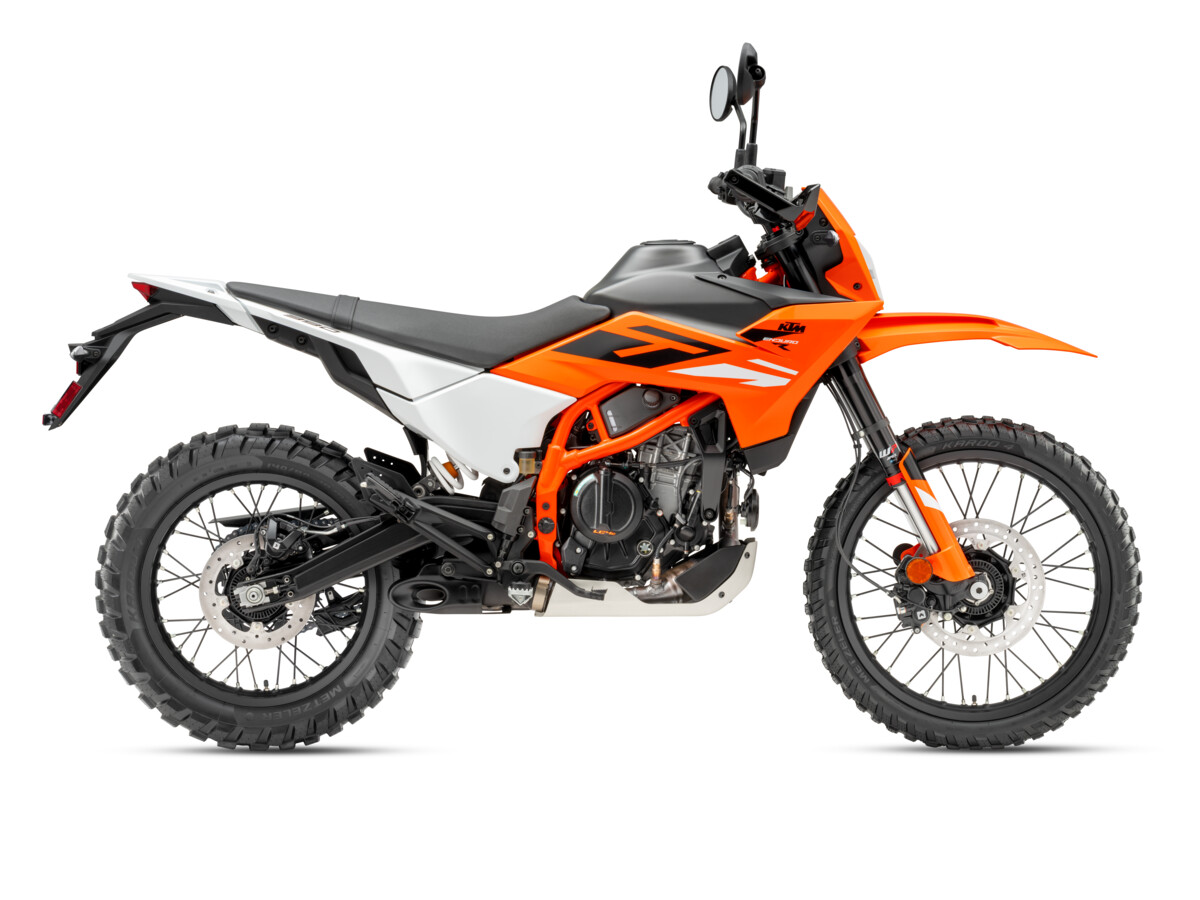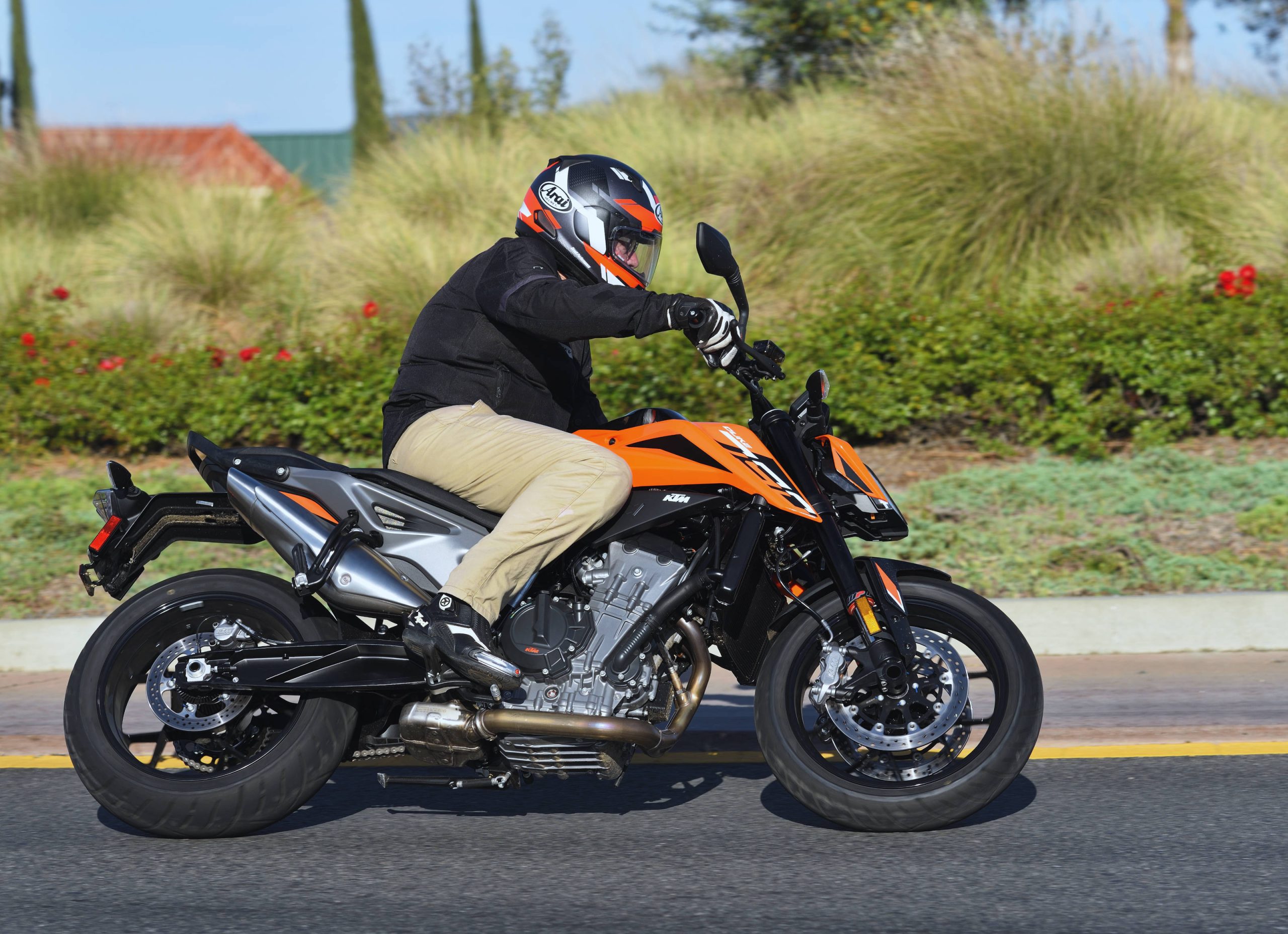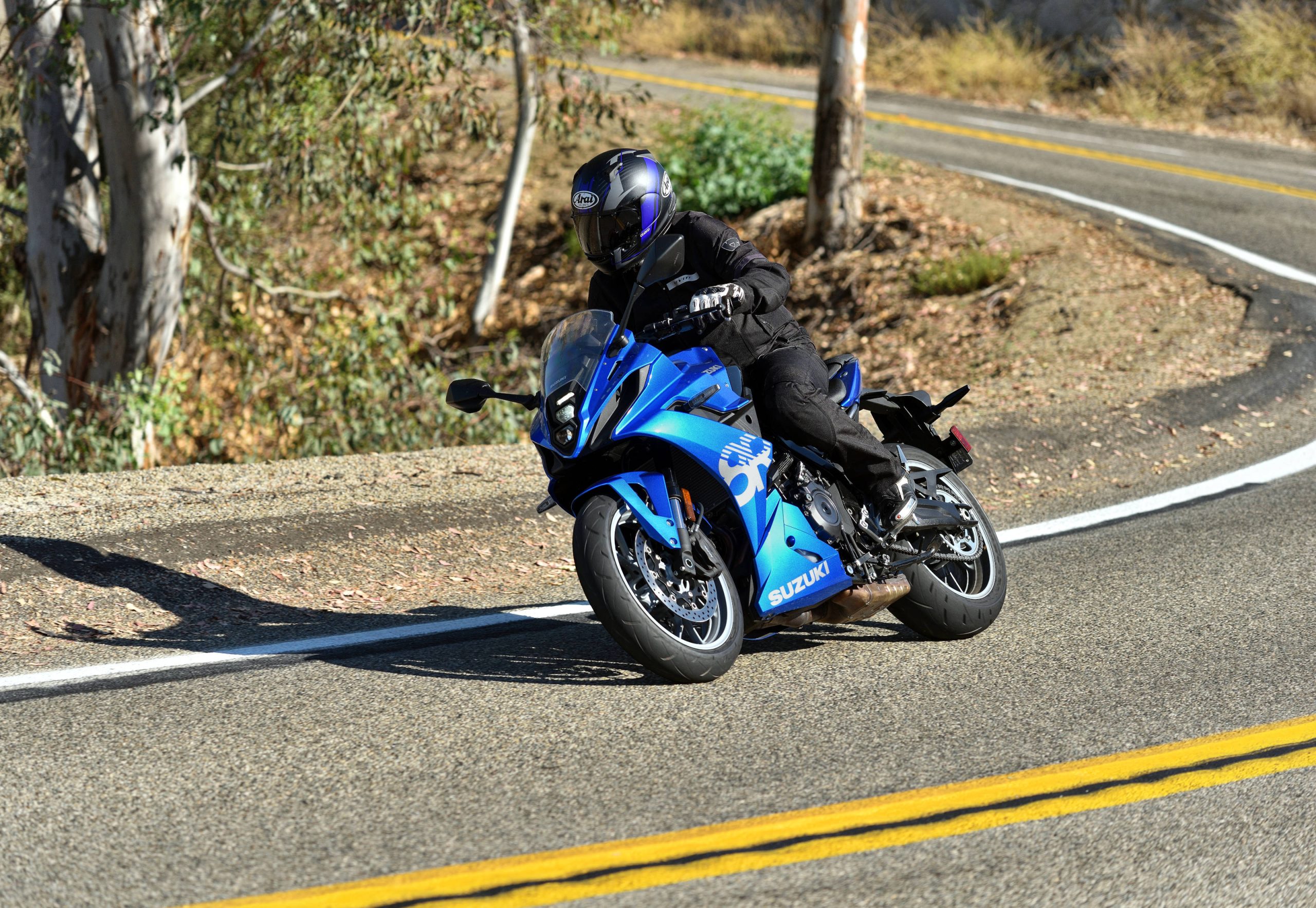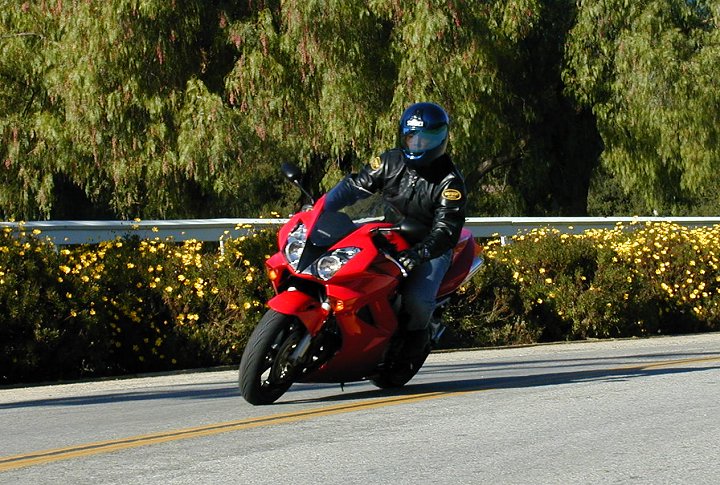
This is Part Two of the 2002 Interceptor ride review that began with our report on December 13, 2001. If you haven’t read Part One, you should do so before reading this portion of our ride review.
I didn’t get quite as many miles on the Interceptor as I had hoped. Part of this had to do with testing right around the holiday season, and part of it had to do with Honda’s need for the test bike back a bit quicker than I had expected. After putting several hundred miles on the Interceptor, however, in varying conditions, my initial impressions of the bike were reinforced, and some other aspects of the bike’s character came through.
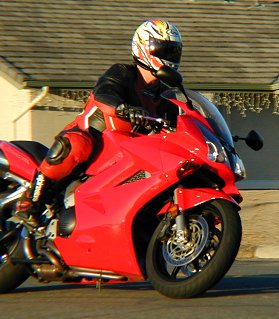
Let me begin by summing up my basic feelings about the new Interceptor. The prior Interceptor was an outstanding sport tourer. It had a “softness” about it, however. The suspension and the chassis seemed to give a little too quickly when the bike was pushed hard, or when ridden back-to-back with a modern sportbike.
The new Interceptor really has a different personality in this respect. The chassis and suspension have a much firmer feel to them, even though the suspension tuning gobbles up small bumps extremely well (see my discussion on this topic in Part One). The new Interceptor simply feels more “crisp” when you ride it. It changes directions more quickly and decisively, provides much better feedback, and gives the rider an even greater sense of control. Forget the peak horsepower and torque (which are relatively the same — more about this later) and the slightly heavier dry weight, the Interceptor is a big step forward and a great ride.

When I wrote Part One, I wanted to have more time with the bike (both on the bike and off the bike — looking at it) before commenting on the styling. At first, I didn’t know what to think about the styling of the new Interceptor, but it definitely grew on me. In fact, to me, the new VFR really has a more European influence than prior Interceptors. The back of the bike looks absolutely fantastic — the high pipes displaying that single-sided swingarm in all its glory, and those finely sculpted tail light lenses (like a jewel).
The front end of the bike took longer to appreciate, but the profile of the front works very well with the bike as a whole. The indentation just below the headlight, and above the turn signals (see the photo at the top of Part One), create a very aerodynamic look, and a type of aggressive tension that complements the sportier nature of the new machine.
I was not as pleased with the look of the bike from the front — looking directly into the headlights. Overall, however, the styling of the new Interceptor is very mature, and more daring than one would normally expect from Honda.
This next comment relates purely to the emotion of riding the new Interceptor. With its firmer, sportier feel, the incredible intake noise it makes above 7,000 rpm (when the rest of the valves come into play), and the dramatic new styling, the rider feels more vibrant and (as corny as it might sound) younger on this bike than on last year’s Interceptor.
While you could say that older Interceptors had a somewhat European, sophisticated look and feel to them — and the V-4 engine always gave a distinctive sound — the new bike takes these same sensations much further.
The new Interceptor now also handles so well, and is so well suspended, that the old question surfaces stronger than ever, i.e., Do you really need a pure “sportbike” for the street, when something like the Interceptor exists? With the way the new Interceptor handles, a rider of equal skill on a sportbike would not walk away from the Interceptor through the twisties without violating “safe and sane” street riding rules. In other words, the new Interceptor is probably as quick as any of us need to be through the twisties.

At right is a dyno chart provided by Honda in its press material for the new Interceptor. It shows the expected effect of the VTEC system, i.e., boosted torque both below and above the changeover at 7,000 rpm. We did not get the chance to dyno the new Interceptor, either alone or back-to-back with last year’s model. I did note (as many of you may have noted) that Motorcycle Online published a dyno chart that showed the new bike making virtually the same power as the old bike across the board. I would not question the accuracy of what Motorcycle Online observed (they tend to be straight shooters about this type of information), but I will note that I saw three other dyno comparisons published in other magazines (European magazines — where the Interceptor was available to the press quite a bit earlier than here in the United States) that showed basically the same power curve improvement that Honda shows in its press materials. The only explanation that I can come up with is the fact that MO’s test bike may have been an extremely low mileage bike (as mine was) when it was dynoed. In my experience, Hondas gain a substantial amount of horsepower after several thousand miles. They run “tight” early on, basically because they are built to very careful tolerances and tend to take longer to “loosen up”.
In any event, the new Interceptor is a dramatically better bike due to its handling characteristics alone (and I happen to like the styling quite a bit better — as I discussed earlier).
The new Interceptor is an extremely comfortable bike to ride, as well. The seating position feels almost identical to last year’s bike (which is a good thing), and the wind protection from the new fairing seems to be slightly better. If you are at all comfortable on a modern sportbike, the Interceptor will likely make you feel that you are riding in a very relaxed and neutral position. Just the right amount of weight on your palms as you grip the bars, and leaning just far enough forward to feel involved with the machine, but not cramped. Through the development of its predecessors, the Interceptor very carefully evolved towards its current riding position — and Honda is not changing it with the new bike. Comfort is nevertheless improved, however, by the additional wind protection I have already noted.
The Interceptor will now accept color-matched saddlebags manufactured to Honda’s specifications by Givi. These bags were not available when I tested the Interceptor, but should be available sometime around March of this year, according to Honda. The brackets for these bags are already on the bike, as part of the passenger footpeg castings. Carefully integrated into the design of the Interceptor, these brackets are an immeasurable improvement over the after-market brackets that marred the look of many predecessor models. Although we have not seen the bags (even in prototype form), we have personal experience with Givi motorcycle luggage, and it is invariably well made and usefully proportioned. We would expect no less from the Honda design executed by Givi for the Interceptor.

Once again this year, the Interceptor has very thorough instrumentation — logically laid out and highly legible. Included are an electronic tachometer, as well as LCD readouts for speedometer, air temperature, coolant temperature, odometer, two trip meters and a clock.
Although I am not generally a fan of linked braking systems, the Interceptor continues a trend by Honda to make the operation of its linked braking systems more subtle and sophisticated. The new Interceptor very lightly applies the opposite brake, while more fully applying the primary brake selected by the rider. For example, the front brake lever activates the outer two pistons of the left side front caliper, all three pistons of the right side caliper, and only the center piston of the rear caliper. The rear brake pedal activates the two outer pistons of the rear caliper, and the center piston in the left front caliper. As I said, the effect is more subtle and better balanced than the linked braking system on the prior Interceptor. Less experienced riders will surely benefit from this system, and it is less offensive (and closer to invisible) to more experienced riders, who might otherwise wish to create the subtle balance between front and rear braking themselves, manually.
Regardless of your feelings about linked brakes, the new Interceptor stops very quickly and confidently, and the linked braking system tends to reduce fork dive when braking hard.
Honda has also taken night vision while riding the Interceptor to a new level. The superb, modern, multi-reflector headlight design, with clear lenses, has benefited many Honda vehicles manufactured in the past few years. Honda has this design technique down as well as anyone, and employs it through four separate headlights on the new Interceptor — including two H4 low/high beams and two H7 high-beam-only bulbs. Recognizing that many Interceptor pilots will use their bikes for nighttime touring and/or commuting, Honda’s headlight system borders on overkill, but is much appreciated by the rider.

A few more comments on the engine, transmission and chassis.
First of all, the transmission requires a fairly solid boot, but shifted decisively and consistently during our testing. Clutch pull was reasonably light, and engagement was both smooth and consistent. The six gears seemed well spaced (gearing has been shortened in the lower gears this year for better acceleration), and freeway cruising in sixth gear kept the bike well below the 7,000 rpm transition point for the VTEC system. If I recall correctly, you must be travelling roughly 100 miles per hour to reach 7,000 rpm in sixth gear.
Unlike several European tests I have read, I experienced no unusual surge of power at 7,000 rpm. The intake noise changes dramatically, but the transition from two-valve combustion chambers to four – valve combustion chambers is completely seamless. There is no “kick in the pants”, just the beautiful sound I discussed in Part One of this ride review and a continuing, strong surge of power. Indeed, I purposely rode at 7,000 rpm, transitioning quickly below and above the VTEC engagement point, to evaluate the smoothness of this transition. It is remarkably smooth, despite the dramatic change in the sound coming from the intake.
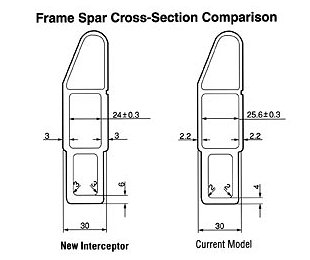
The few added pounds to the chassis this year result, as far as I can tell, primarily from the new exhaust system, thicker frame spars and beefier 43mm fork (the swingarm is also slightly longer). Offsetting this, to some extent, is the lighter engine resulting from the abandonment of the gear-drive mechanism for the cams. The thicker frame spars, longer swingarm and larger diameter fork are significant contributors to the improved handling, and, in my opinion, were well worth any additional weight they created. A slightly longer wheelbase makes the new Interceptor more stable at the same time it enjoys the handling advantages discussed earlier in this review. Do not get hung up on statistics — in this instance, a slightly longer wheelbase and slightly more weight add up to significantly improved handling.
The bottom line is this: The 2002 Honda VFR800Fi Interceptor, with its dramatic new styling, tight handling and soulful motor (especially, above 7,000 rpm) makes you feel like you are riding a “bad ass” sportbike, without any of the pain. Last year’s bike feels a bit dowdy, by comparison. Honda has very carefully, but just as effectively, moved an icon forward to the next level.
The new Interceptor carries a U.S. MSRP of $9,999 ($10,999 with optional ABS), and should be available in the United States later this month. Visit Honda’s web site for more details and specifications.

